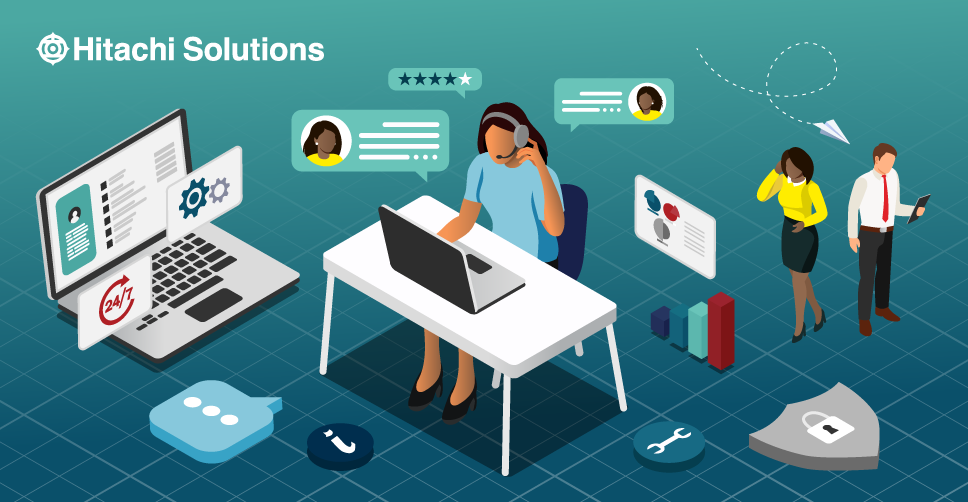

Copilot Studio Discovery Workshop
This Copilot Studio Discovery Workshop and POC is the first step in jumpstarting automation transformation with AI-driven chatbots and low-code autonomous agents.
Download the OfferThere’s a reason why consumers dread contacting call centers: They’ve earned a reputation for long wait times, confusing phone menus, repetitive explanations, and unsatisfactory results. And things aren’t much better for agents. The rate of turnover in a call center is anywhere from 30% to 45%; agents typically cite angry customers, poor management, high call volumes, lack of career development, and outdated systems as reasons for leaving. Despite these frustrations, call centers remain an integral component of any B2C business’ customer service and support strategy.
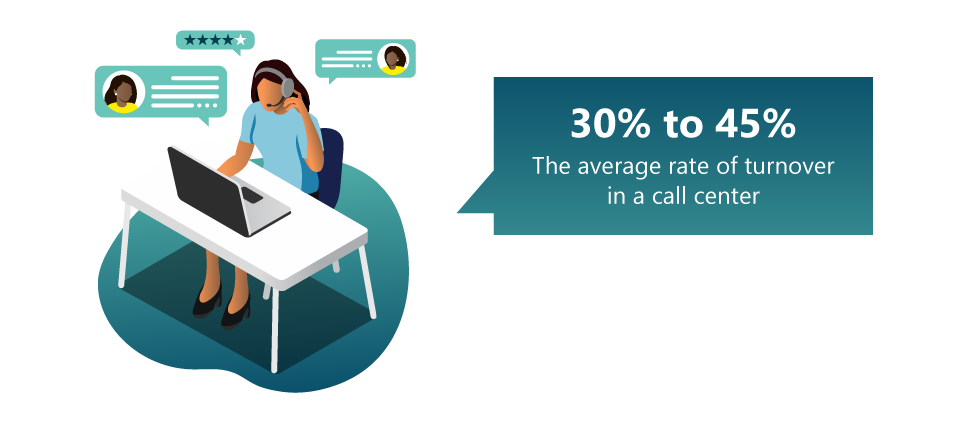
So, what if there were a way to improve the call center experience for both customers and agents alike? With call center optimization, you can.
Call Center Evaluation Checklist
Before you start to look at call center best practices, you should conduct an in-depth evaluation of your existing call center operations to determine what’s working, what isn’t, and what your plan of action should be. There is no one-size-fits-all approach to evaluating the health of your call center, however, there are a few basic questions you can start with:
- How many calls does it typically take for our agents to resolve the customer’s problem?
- How long do customers typically wait on the phone before they’re connected to an agent?
- Do we consistently follow up after each interaction to gauge customer satisfaction?
- Are our agents successful in supporting customers because of our existing technology, or in spite of it?
- Do we currently provide customers with self-service options?
- On the whole, are our customers satisfied by their call center experience?
- On the whole, are our agents satisfied with their workplace experience?
You can tailor this list of questions as necessary based on your organization’s unique goals and objectives in order to get an accurate read of the situation. Even if you conclude that your call center is running effectively and efficiently, remember that there’s always room for improvement, and that it’s still beneficial to stay current on the latest call center best practices and trends.
20 Call Center Best Practices to Implement Today
Now that you’ve evaluated the overall health of your call center, let’s talk call center best practices. Again, which best practices you choose to implement depends entirely on the needs of your organization and the current structure of your call center. In the interest of covering as many bases as possible, we’ve aimed to provide an exhaustive list that you can pick and choose from as necessary.
1. Establish and monitor key performance indicators (KPIs). One of the best ways to assess the efficacy of your call center is by using cold, hard data — in this case, call center metrics. KPIs such as First Call Resolution (FCR) and Customer Satisfaction Score (CSAT) provide a window into customer satisfaction and agent performance and make it easier to identify weak spots within your call center. Just keep in mind that not all metrics are made alike; you’ll want to focus on the ones that align with your business objectives. To see suggestions of which KPIs to monitor, jump down to the next section of this post.
2. Rigorously test for quality assurance. There are any number of ways to do this, though call monitoring and scoring is perhaps the most popular method. For those unfamiliar, call monitoring refers to the process by which businesses listen to live or previously recorded calls to audit agent performance. Calls are then scored based on criteria such as whether the agent adhered to the call center script, observed company protocol, demonstrated appropriate etiquette, or showcased problem-solving capabilities. Typically, once a call has been scored, the call center manager or a QA specialist will conduct a post-mortem performance assessment with the agent in question. The objective of this exercise is not only to correct the individual agent’s mistakes, but also to identify and understand behavioral patterns and develop training curriculum to support continuous improvement.
3. Provide customers with multiple self-service options. According to a survey from BankMyCell, 75% of Millennials avoid phone calls because they see them as time consuming; 81% report feeling apprehension anxiety before summoning the courage to make a call. By all appearances, Gen Z seems to share that sentiment. Fortunately, modern technology has made it possible for businesses to provide their customers with alternatives to the traditional call center experience, including self-service portals, chatbots, and interactive voice response systems. And it isn’t just customers who benefit: Self-service options are proven to reduce call volume, thereby alleviating some of the pressure from call center agents.
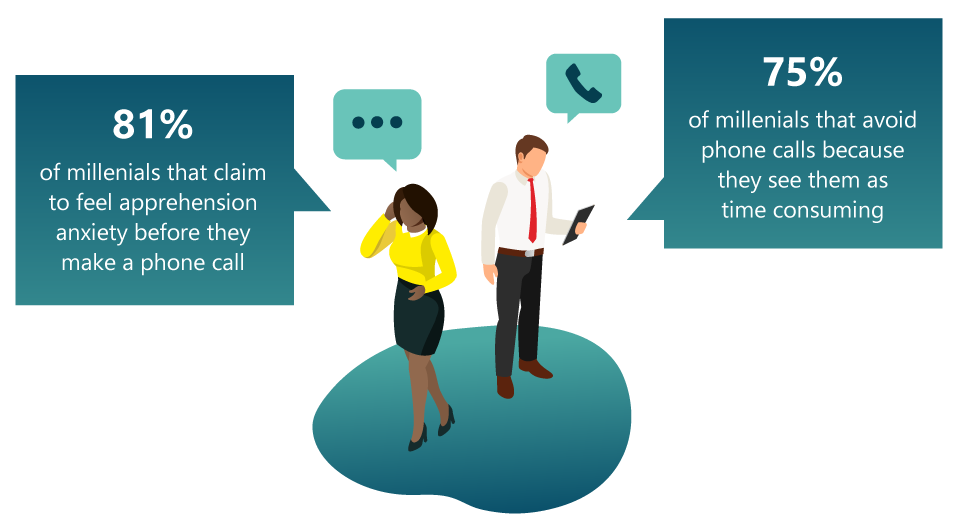
4. Develop a centralized knowledge base. Speaking of self-service options, a customer service knowledge base is one of the easiest ways to deliver the information your customers need exactly when they need it. When building your knowledge base, make sure it is easy to locate and navigate, that it addresses frequently asked customer questions, and that it clearly identifies next steps if the customer cannot find the information they’re looking for. Be sure to update your knowledge base on a regular basis so that the information it provides is always current and relevant.
5. Publish helpful and informative content in the form of FAQs and tutorials. Talk to any of your agents, and they’ll likely tell you that there are a number of basic customer questions they answer on a regular basis. One easy way to reduce call volume and eliminate wait times is to add an FAQ section to your knowledge base that customers can easily refer to. While you’re at it, you might also consider creating a series of tutorials that provide customers with step-by-step guidance on how to resolve low-level problems.
6. Reduce the average amount of time customers spend in queue. Unfortunately, there’s no one quick fix for this — it requires trial and error. That said, introducing self-service options, closely monitoring KPIs, and continuously reviewing and improving agent performance all go a long way toward achieving this goal.
7. Invest in a system for organizing customer inquiries. A ticketing system can automatically record customer information and the nature of the inquiry, enable agents to prioritize open cases based on when they were submitted and the severity of the issue, and enable customers to monitor the status of their case in real-time.
8. Develop a foolproof contingency plan. It’s generally wise to hope for the best but plan for the worst; this is as true for call centers as it is for any other line of business. Life is unpredictable, and disaster can strike at a moment’s notice, so it’s important that you have a contingency plan — or multiple plans for different scenarios — in place to get your call center back online after a crisis. When developing your call center emergency plan:
- Identify any systems that could be at risk, especially those that are business-critical
- Identify backup power sources
- Identify key personnel
- Prioritize responsibilities that support business continuity
- Clearly communicate expectations to all call center agents
- Assemble a team to oversee plan execution
- Rigorously test your contingency plan
9. Establish and enforce call center standard operating procedures (SOPs). SOPs should be designed in such a way that they provide agents with clear guidance on how to complete certain tasks and on how to behave or respond in just about any situation. To that end, SOPs should be clearly documented and easily accessible to agents; most often, organizations will store SOPs within an internal knowledge base. Ultimately, by establishing and enforcing SOPs, you can prevent your agents from being caught off guard and improve your call center’s overall performance.
10. Hire call center agents based on attitude over aptitude. Working in a call center requires patience, empathy, excellent communication skills, and enthusiasm — qualities that even some of the most technically gifted individuals do not possess. There, when hiring, pay at least as much attention to how applicants engage with other people as you do to their technical qualifications.
11. Provide comprehensive training. From core company values and product knowledge to how to use different systems and how to handle customer complaints, new agent training and onboarding should cover everything that agents need to know in order to do their jobs and do them well. Experiment with different training formats, such as microlearning and gamification, to find out which ones are most engaging and most likely to result in knowledge retention.
12. Schedule regular check-ins and retraining sessions. Training shouldn’t be a one-time deal. Provide your agents with opportunities to review basic concepts, learn new ones, and sharpen their skill set. It’s also good practice to check in with your agents on a regular basis to find out what they’re struggling with and whether they’d benefit from additional training.
13. Encourage agents to focus on the positive. Although call center agents should always strive to do right by the customer, not every issue can be resolved. This can lead to anger and frustration on the customer’s part and can be a demoralizing experience for agents. When faced with difficult situations, agents should make every effort to maintain a good attitude and avoid negative language. Rather than tell customers what they can’t do, agents should share what they can do — for example, they might not be able to process a refund, but they might be able to offer the customer some other form of credit or incentive. The best way to ensure that agents use positive language, even when met with adversity, is to provide them with call scripts for different scenarios.
14. Maintain open lines of communication with your agents. As we’ve already addressed, call centers are subject to high turnover rates due to agent burnout. One way to reduce your attrition rate is to be open and communicative with your agents and provide them with plenty of opportunities to share their thoughts, such as whether they’re experiencing high levels of stress or the areas in which they believe there’s room for improvement. By soliciting and actually acting upon that feedback, you can create a more positive, welcoming environment for your agents, thereby increasing employee engagement and improving job satisfaction.
15. Mystery shop your call center. Mystery shopping refers to the process by which a company hires an individual to pose as a customer in order to evaluate employee performance. Most commonly associated with the retail and restaurant industries, a growing number of organizations are employing mystery shoppers to audit their call centers because it eliminates potential biases and allows for a more accurate read of the customer experience.
If you decide to implement this best practice within your organization, make sure your mystery shoppers have a clear understanding of who your average customer is and what they want. “It’s more important to learn about the customer than the actual business itself,” said Demitris Edwards, Director at Vocall Group, a telephone mystery shopping company. “If you know too much about the business, then you start to make exceptions for certain behavior when all that matters is customer experience.”
16. Offer incentives for exceptional performance. Good behavior should be rewarded, and workplace incentives are proven to have a positive effect on employee engagement and morale. According to a survey from Genesis Associates, 85% of workers said that they felt more motivated to do their best when offered an incentive. There are any number of ways to approach building an incentive program, including employee recognition programs, compensation incentive programs, and extra time off — whatever makes the most sense for your organization.
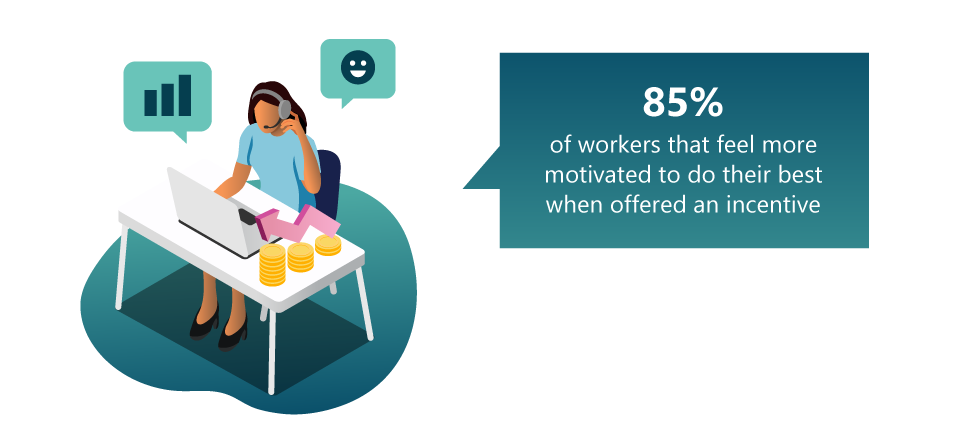
17. A/B test call center scripts. We mentioned earlier that call scripts are a great way to help agents navigate even the most challenging customer interactions; an easy way to determine the efficacy of these scripts is through A/B testing. A/B testing, also known as split testing, is a user experience research methodology that compares two different versions of something — in this case, call center scripts — to determine which one performs better. Although A/B testing is more commonly associated with marketing, it’s increasingly become a popular way for organizations to gauge customer response and improve scripting.
18. Scale your team with Voice over IP (VoIP) technology. Gone are the days when the term “call center” referred to an actual, physical location. Now, thanks to VoIP technology and cloud phone systems, you can scale your team and save money in the process by hiring call center agents from anywhere in the world.
19. Follow up with customers after every call to gauge their satisfaction. The most effective way to evaluate the performance of your call center is to go directly to the source. Customers are often reluctant to vocalize their opinion unless prompted to do so. Only one in 26 customers complain about a negative experience; the rest simply churn without ever explaining why.
Therefore, it falls upon you to do the prompting. Solicit customer feedback in the form of surveys and feedback boxes or reach out directly and conduct customer interviews; you might even consider offering some sort of incentive to customers in exchange for their honest opinions. In doing so, you’ll get an unvarnished look at the ways in which your call center falls short, and the areas in which your agents excel.
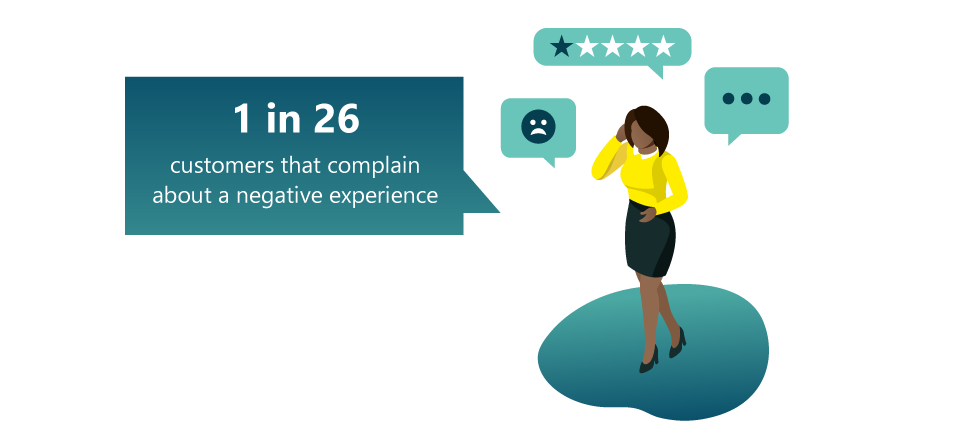
20. Integrate systems for a streamlined experience. Your agents rely on a wide variety of tools and technology to get the job done, from cloud-based telephony systems and predictive dialers to ticketing systems and customer relationship management software. This typically involves a lot of jumping around, which can be stressful for agents and frustrating for customers. By integrating the various systems within your call center and presenting all relevant information, including customer history, via a single, centralized dashboard, you make it easier for agents to resolve open inquiries, reducing handle time and minimizing customer frustration in the process.
15 Call Center KPIs to Monitor
As we’ve already touched upon, call center metrics are a valuable resource to refer to when evaluating call center performance. These are just a few of the KPIs you might consider monitoring within your organization:
Operational Metrics
1. Cost Per Call
Cost per call measures the amount it costs to handle a single phone call. In order to calculate cost per call, add up the costs to run your call center within a given period of time (say, a month or a year), including employee wages, benefits, software licenses, and so on. Then, divide that number by the number of calls answered during that same period of time.

2. Call Arrival Rate
This KPI is used to measure the average number of incoming calls a call center receives within a given period of time, most commonly calls per minute or calls per hour. In order to determine your call arrival rate, divide the total number of calls your center receives in a day by the desired amount of time — think seconds, minutes, or hours.

3. Total Calls Handled
As its name implies, this metric refers to the total number of calls your call center handles in a day; in this case, a call is considered “handled” if the agent answered the phone and had a conversation with the customer. No fancy equations here — to calculate your total calls handled, simply tally them up.
4. Percentage of Calls Blocked
The percentage of calls blocked indicates how many customers receive a busy signal when contacting your call center. Naturally, the goal is to keep this percentage as low as possible. Divide the number of calls that do not receive agents by the total number of incoming calls and multiply by 100 to calculate your percentage of calls blocked.

5. First Response Time (FRT)
This KPI measures the amount of time between when a customer first submits an inquiry and when call center agent contacts them with a response. If your call center uses some form of ticketing system, your first response time should be 24 hours or fewer; for phone-based inquiries, your first response time should be a matter of minutes.
6. First Call Resolution (FCR)
Perhaps the best-known call center metric of all, FCR is an indication of a call center’s ability to resolve a customer issue or complaint the first time they call in, no follow-up necessary. FCR is typically calculated by the total number of calls resolved on the first attempt by the total number of first calls.

It’s important to note that the criteria for FCR vary from one call center to the next; for example, one call center might consider a call in which a colleague is conferenced in to be an escalated call, whereas another might not. In order to get an accurate read of your call center’s FCR, you must first decide how your organization defines this helpful metric.
7. Repeat Call Rate
Your repeat call rate refers to the number of calls made to address the same issue or subject, expressed as a percentage; this metric is closely related to FCR. To calculate your repeat call rate, divide the total number of calls related to a specific issue by the total number of calls.

8. Attrition Rate
Your attrition rates measures agent turnover — that is, the number of employees lost over a given period of time. In order to calculate your attrition rate, divide your total number of attritions by your average number of agents and multiply by 100.

Call Time Metrics
9. Average Speed of Answer (ASA)
This metric indicates how long it takes agents to answer a call once it has been routed to the call center. To calculate ASA, divide the total length of customer wait time by the number of calls answered and multiply by 100.

10. Average Handle Time (AHT)
Not to be confused with AWT, AHT is a measure of the average time it takes for an agent to complete a call of customer interaction. To determine your call center’s AHT, divide the sum of your total talk, hold, and follow-up time by the total number of calls answered.

11. Call Abandon Rate
Call abandon rate refers to the percentage of customers who hang up before being connected to an agent. To calculate your call abandon rate, divide the total number of abandoned calls by the total number of inbound calls and multiply by 100.

Customer Satisfaction Metrics
12. Customer Effort Score (CES)
CES refers to the amount of effort customers must exert in order to get an issue resolved, a question answered, or a request fulfilled. The most effective way to determine the CES of your call center is to conduct a survey in which you ask customers to rank their experience on a seven-point scale ranging from “Very Difficult” to “Very Easy.”
13. Customer Satisfaction Score (CSAT)
This KPI, which is often used in conjunction with CES, indicates overall customer satisfaction with your call center’s service. And, like CES, CSAT is determined by asking customers to rank their experience on a seven-point scale ranging from, in this case, “Very Unsatisfactory” to “Very Satisfactory.” Ideally, your CSAT score will fall somewhere between 75% and 85%, though this may vary by industry. To see CSAT benchmarks by industry, please refer to the American Customer Satisfaction Index.
14. Customer Churn Rate
Customer churn rate refers to the percentage of customers who discontinue services over a given period of time. A high churn rate is a sign of poor customer satisfaction and should prompt reevaluation of existing call center practices. To calculate your churn rate, start by subtracting the total number of users at the end of the period from the total number of users at the beginning of the period. Once you have that sum, divide it by the total number of users at the beginning of the period and multiply by 100.

15. Net Promoter Score (NPS)
NPS is a popular KPI for evaluating the overall customer experience, customer loyalty, and the potential for business growth. Created by loyalty marketing expert Fred Reichheld and first published in the Harvard Business Review, the NPS survey asks customers to use a 0–10 scale to rank how likely they would be to recommend a business or brand to a friend or colleague, with 0 being “Not at all likely” and 10 being “extremely likely.” Those who offer a score of 9 or 10 are considered “Promoters” (loyal enthusiasts likely to fuel growth); those who score 7 or 8 are considered “Passives” (satisfied, but unenthusiastic and therefore more likely to leave); and those who score 0–6 are considered “Detractors” (unhappy customers who are likely to impede growth). Like CES and CSAT, NPS is a valuable way to gauge the call center customer experience and should be included in customer surveys.
How to Leverage Data in Your Call Center
Once you’ve gathered relevant call center data, it’s time to put it to good use by applying real-time analytics. Whether your goal is to reduce handle time, improve performance management, or boost customer retention, advanced analytics can provide powerful insights into your call center’s strengths and vulnerabilities and help optimize operations in order to enhance the customer experience.
To effectively leverage data within your call center, you need to start with a solid foundation — one that consists of tightly integrated systems that help you meet business objectives. Together, Dynamics 365 Customer Service and solutions like Dynamics 365 Customer Service Insights and Customer Voice enable businesses to empower call center agents with streamlined data and unified solutions. And, backed by Hitachi Solutions’ award-winning implementation services and support, you’re sure to succeed. We’ve configured custom solutions for call centers across all industries and verticals, and we have the proven expertise to help you succeed.
Enhance call center performance with Microsoft and Hitachi Solutions – contact us today to get started.


